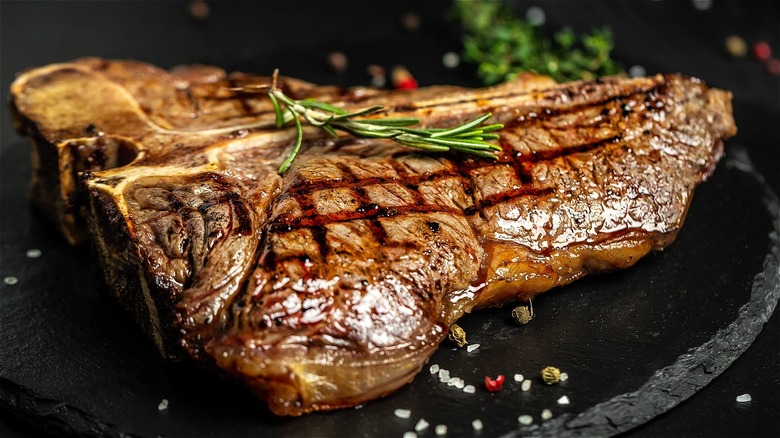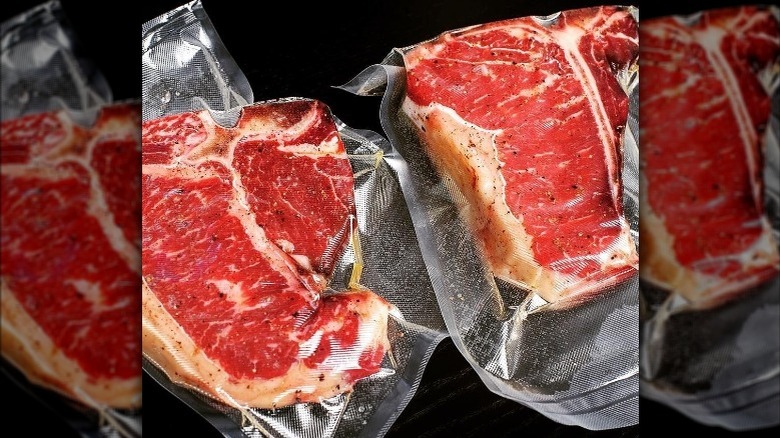The Size Requirements That Separate Porterhouse And T-Bone Steaks
When you want to go out to an impressive meal, where do you go? Chances are that at least once, you've celebrated — or dreamed of celebrating — a special occasion at a steakhouse. Whether you prefer to dine at Texas Roadhouse, the steakhouse that has the best steak according to a Mashed survey, or maybe at an expensive Wagyu beef restaurant, there's something luxurious about a big, juicy steak. But when it comes to the steakhouse experience, it all comes down to which cut you order.
Of course, there are affordable, flavorful cuts of steak. Butcher Pat LaFrieda told Mashed that chuck eye is "a great cut for the price." But if you're going for that high-end steakhouse experience, chances are there are a few top choices that will catch your eye. If you're staring at the menu trying to decide on which cut to order, there are two items in particular that might confuse you: T-Bone and porterhouse. The T-bone steak is made up of a t-shaped bone that has the tenderloin on one side, and the New York strip on the other. A porterhouse steak is made up of a t-shaped bone that has the tenderloin on one side, and the New York strip on the other. Wait, are you seeing double, too? It turns out that because T-bone and porterhouse steaks are taken from the exact same part of the cow, there's only one thing differentiating the two: size.
The porterhouse steak is wider
In "A Tramp Abroad," Mark Twain famously describes angels delivering a "mighty porterhouse steak and inch and a half thick, hot and sputtering from the griddle; dusted with a fragrant pepper; enriched with little melting bits of butter" to "a poor exile." And who wouldn't volunteer to be exiled for such a meal? That being said, it was probably big enough to share with the angel. According to the USDA, "the maximum width of the tenderloin" (the filet mignon) of a porterhouse steak "must be at least 1.25 inches," while a T-bone's tenderloin portion only needs to be "at least ½ inch." Maybe Twain's exile should make a friend or two in order to enjoy that angelic porterhouse without popping a button on their waistband.
The fact that the filet is larger on porterhouse steaks means they often have larger price tags than T-bones, according to Steak University. But it's important to note that not all butchers cut these steaks the same. Occasionally, the size of a T-bone's fillet can outstrip that of a certified porterhouse, which could be a better deal. Take your time examining the meat before you purchase. Meanwhile, some high-end butchers like Pat LaFrieda sell 24-ounce porterhouse and T-bones for the same price. In that case, it comes down to how much filet mignon you're in the mood for. But as LaFrieda says about both cuts of beef on its website, "It's the perfect steak when you want the best of both worlds."

